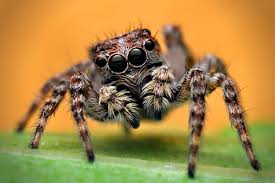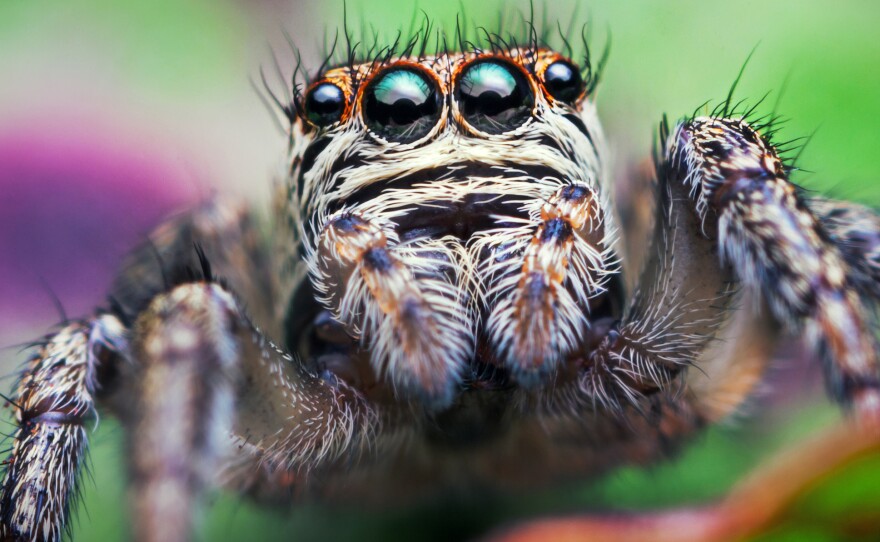Jumping spiders are among the most fascinating arachnids in the world. Known for their exceptional vision, agile movements, and curious behavior, these spiders captivate both scientists and casual observers. Whether you’re intrigued by their up-close face, wondering about their bite, or curious about their lifespan and diet, this guide provides a comprehensive look at the jumping spider.

Jumping Spider Lifespan
How Long Do Jumping Spiders Live?
The average jumping spider lifespan ranges from one to two years, depending on species and environmental conditions. In captivity, some jumping spiders may live slightly longer due to controlled habitat and consistent food supply.
Factors Affecting Lifespan
- Species variation: Some species naturally live longer than others.
- Predation: In the wild, jumping spiders face threats from birds, reptiles, and other insects.
- Climate and habitat: Temperature and humidity can influence survival rates.
- Nutrition: A consistent diet contributes to a longer lifespan.
Jumping Spider Size
How Big Do Jumping Spiders Get?
Jumping spiders are generally small, with most species measuring between 4 mm and 15 mm in body length. Despite their compact size, they are muscular and capable of impressive leaps—often up to 50 times their body length.
Size Comparison by Species
| Species | Average Size (mm) |
|---|---|
| Phidippus audax | 13–15 |
| Salticus scenicus | 5–7 |
| Hyllus diardi | 10–12 |
| Maratus volans | 4–6 |
Jumping Spider Bite
Are Jumping Spider Bites Dangerous?
Jumping spiders are not aggressive and rarely bite humans. When they do, it’s typically in self-defense. The jumping spider bite is mild and comparable to a mosquito bite—causing slight redness, itching, or swelling.
Symptoms of a Bite
- Minor pain or discomfort
- Redness around the bite area
- Itching or mild swelling
When to Seek Medical Attention
While jumping spider bites are generally harmless, individuals with allergies or compromised immune systems should monitor symptoms. If swelling increases or signs of infection appear, consult a healthcare provider.
Jumping Spider Food and Diet
What Do Jumping Spiders Eat?
Jumping spiders are carnivorous and primarily feed on small insects and arthropods. Their diet includes:
- Flies
- Moths
- Mosquitoes
- Ants
- Small crickets
Hunting Behavior
Unlike web-building spiders, jumping spiders actively hunt their prey. They use their excellent vision to stalk and pounce with precision. Their ability to leap great distances allows them to ambush prey effectively.
Feeding in Captivity
Pet jumping spiders can be fed:
- Fruit flies
- Pinhead crickets
- Mealworms (occasionally)
Feeding should occur every 2–3 days, depending on the spider’s age and size.
Why Jumping Spiders Spend All Night Hanging Out
- Hunting: Some jumping spiders are active hunters and use their excellent eyesight to catch prey under starlight or moonlight.
- Mating: Males may perform courtship displays or mate with females during the night.
- Resting: Jumping spiders might rest or sleep in protected areas like under leaves or in burrows.
Jumping Spider Up-Close Face

What Makes Their Face So Unique?
The up-close face of a jumping spider is one of its most distinctive features. With four large front-facing eyes and four smaller ones arranged around them, their face gives an almost cartoonish, expressive appearance.
Vision Capabilities
Jumping spiders have some of the best vision among arachnids. Their principal eyes provide acute vision, while the secondary eyes detect motion and depth. This combination allows them to navigate complex environments and hunt with precision.
Facial Anatomy
- Principal eyes: Large, central eyes used for detailed vision
- Secondary eyes: Smaller eyes for peripheral awareness
- Chelicerae: Fang-like structures used for biting and feeding
- Pedipalps: Sensory appendages near the mouth, often mistaken for tiny arms
Conclusion
Jumping spiders are remarkable creatures with unique traits that set them apart from other arachnids. From their compact size and agile movements to their expressive up-close face and harmless bite, they offer a fascinating glimpse into the world of invertebrates. Whether you’re studying their lifespan, observing their diet, or simply admiring their curious behavior, jumping spiders continue to intrigue and inspire.
Understanding the jumping spider lifespan, size, bite, food preferences, and facial anatomy not only deepens appreciation for these tiny hunters but also highlights their ecological importance.

























